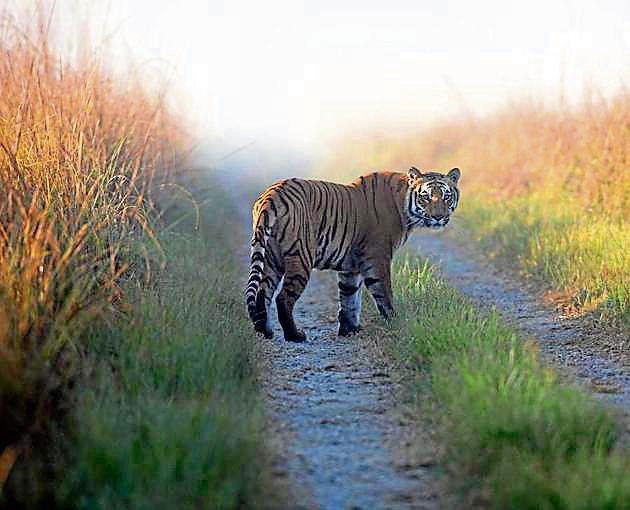Bushes hinder Rajaji big cats’ monitoring, translocation
Thick foliage that grew during monsoon continues to hinder tiger translocation to Rajaji Tiger Reserve (RTR) as officials find it difficult to monitor the two female big cats in the western part
Thick foliage that grew during monsoon continues to hinder tiger translocation to Rajaji Tiger Reserve (RTR) as officials find it difficult to monitor the two female big cats in the western part.

Officials have received permission to radio-collar the two tigers and also the identified big cats to be translocated from the Corbett reserve, but they wait for a light rain for the bushes to settle down.
“Monitoring is an integral part of the (translocation) project. We are unable to monitor both the tigresses because the grass has grown up to 6 feet height. We believe mizzle would curb the growth and allow us to observe the movement of the big cats,” Rajaji director Sanatan Sonkar told Hindustan Times.
The project dating back to 2013 is the brainchild of chief wildlife warden Digvijay Singh Khati who aimed to replenish the western part -- spread over 570 sqkm and divided by a narrow corridor -- with tiger population. The eastern part has reported tiger breeding.
Before Uttarakhand was formed in 2000, Gohari and Chilla ranges of the western part had reported tiger presence. Later, encroachments and presence of forest dwellers degraded the habitat.
After the translocation plan was mooted, a detailed project report (DPR) was submitted to the National Tiger Conservation Authority (NTCA) in 2015. A technical plan, which included a baseline survey of prey and habitat by the Wildlife Institute of India (WII), was submitted in 2016.
In April 2016, the reserve management sent a few field staff for training at Sariska in Rajasthan, but forest fire in Uttarakhand prevented sending more guards.
After Sariska and Madhya Pradesh’s Panna, Rajaji is the third project of the country where tiger translocation would be done to ensure healthy breeding of the big cat.
NTCA gave nod to the project last year. But the real exercise was to identify tigers for translocation. In association with World Wide Fund for Nature (WWF), WII scientists identified big cats. Officials now face natural constraints to take a step forward.
“This process has to be systematic. The tenders for enclosures have been done, which is also an important part of the project. We are monitoring the existing and identified tigers. We are hopeful to complete the project in a few months’ time,” Khati said.
Timeline of project
2013: Tiger translocation plan was mooted
2015: NTCA gave nod for tiger translocation
2016: A batch of field staff sent to Sariska for training
2016: WII submitted technical draft of the translocation mentioning about the prey survey and habitat quality
2017: NTCA gave permission for radio-collaring. Three tigers identified to be translocated




